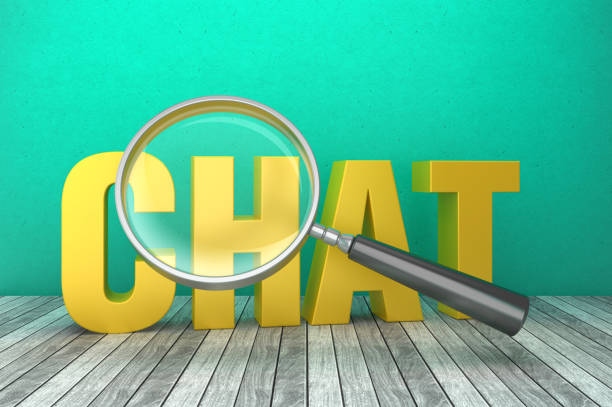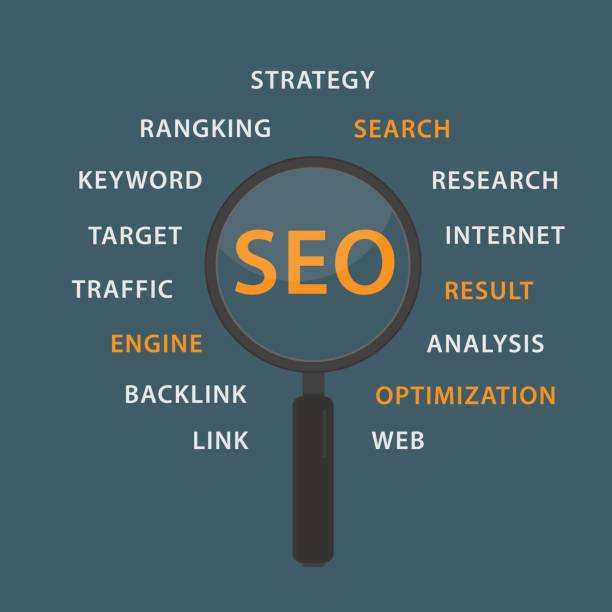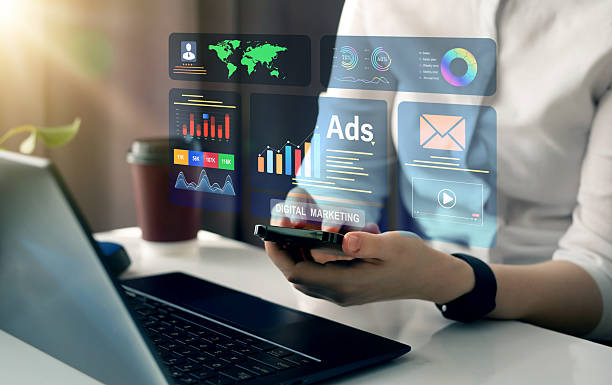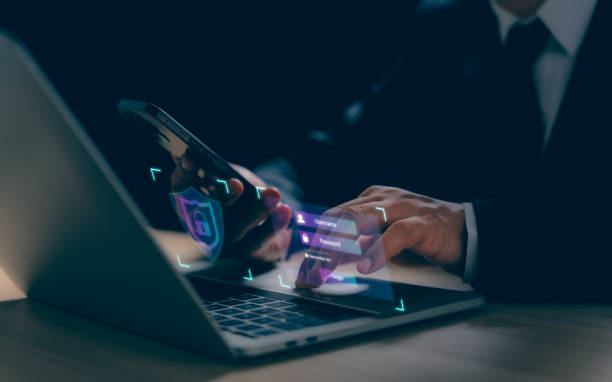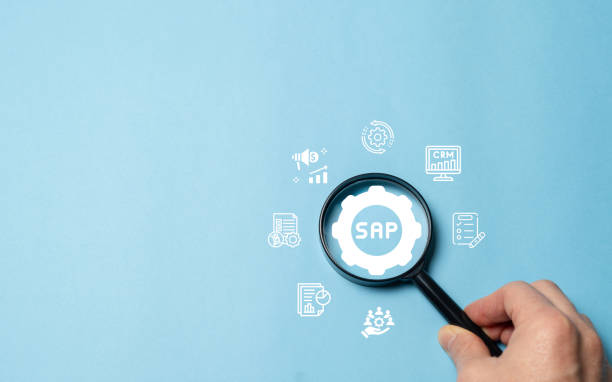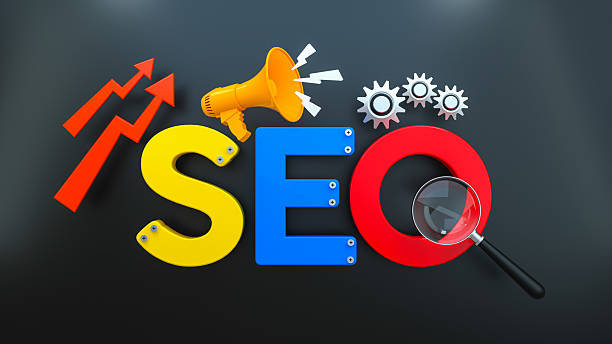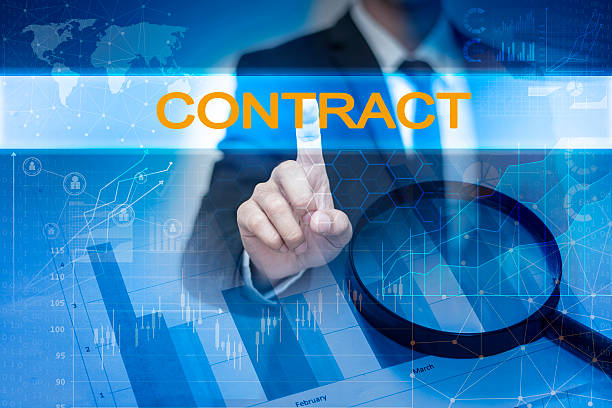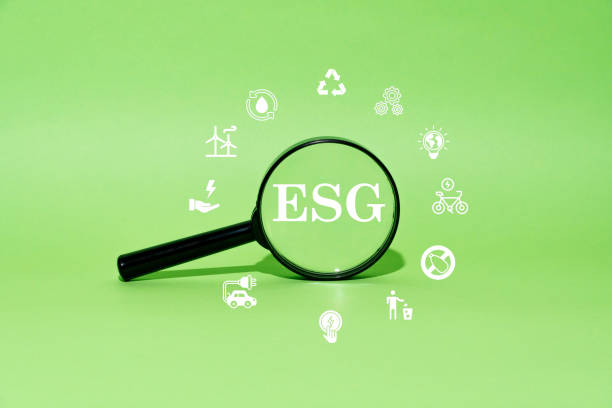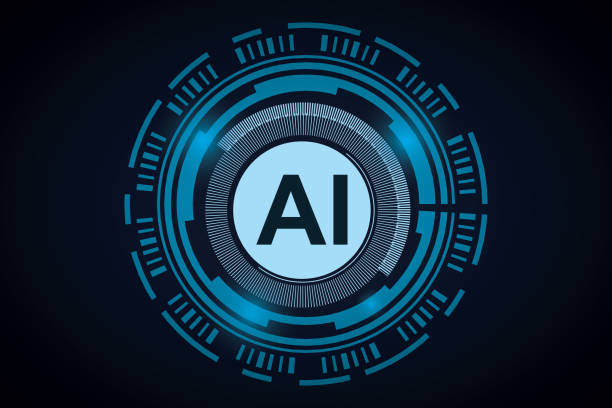What is On-Page SEO and Why Does It Matter?
What is On-Page SEO and Why Does It Matter?
On-Page SEO, also known as Internal SEO, refers to a set of actions taken to optimize website pages in order to improve ranking in search results.
These actions include optimizing content, title tags, meta descriptions, URL structure, and more.
The importance of On-Page SEO stems from the fact that search engines like Google use these factors to better understand the content of web pages and their relevance to user searches.
A website with strong On-Page SEO is more likely to rank higher in search results, thereby receiving more organic traffic.
In fact, #On-Page SEO is the foundation of a successful SEO strategy, and without it, other efforts in the field of Off-Page SEO alone will not be sufficient.
The importance of On-Page SEO is summarized in a few key points.
Firstly, it helps search engines better understand your content.
Secondly, it improves user experience (UX), as a well-structured website with optimized content will be more attractive and usable for users.
Thirdly, it helps you target keywords related to your business and attract more relevant traffic to your website.
On-Page SEO helps your website be seen in search results and attract more potential customers.
In short, On-Page SEO is one of the most important factors for success in the online world and should be given special attention.
By optimizing your site’s On-Page SEO, you can improve your site’s ranking in search results and drive more traffic to your site.
This, in turn, can lead to increased sales and profitability for your business.
Is your company’s website as professional and trustworthy as it should be? Create an online presence with specialized corporate website design by Rasaweb that reflects your credibility and attracts more customers.
✅ Building a powerful and professional image of your brand
✅ Turning visitors into real customers
⚡ Get a free consultation now!
Keyword Research and Its Role in On-Page SEO
Click here to preview your posts with PRO themes ››
Keyword Research and Its Role in On-Page SEO
Keyword research is the process of finding the words and phrases that users use in search engines to find information, products, or services related to your business.
This process forms the basis of your On-Page SEO strategy.
By understanding what words your audience is searching for, you can optimize your content to rank better in search results.
Keyword research is not limited to finding popular words.
Rather, you should be looking for words that are both relevant to your business and have the potential to attract organic traffic.
To do this, you should use various keyword research tools such as Ahrefs, Moz Keyword Explorer, and Ubersuggest to examine related keywords, their search volume, and the level of competition.
After finding the appropriate keywords, you should strategically use them in your content.
This includes using keywords in the page title, meta descriptions, body text, heading tags (H1-H6), and image alternative text (Alt Text).
However, you should avoid excessive use of keywords (Keyword Stuffing), as this can lead to your website being penalized by search engines.
Your goal should be to create high-quality and relevant content that naturally uses keywords.
On-Page SEO using the right keywords helps you attract targeted traffic to your website and, as a result, increase your conversion rate.
Title and Meta Description Optimization
Title and Meta Description Optimization
The Title Tag and Meta Description are two important HTML elements that are displayed in search results and play a vital role in attracting users to your website.
The page title is the title that appears at the top of the browser window and in search results.
The meta description is a summary of the page content that appears below the title in search results.
These two elements are the first things users see in search results and can have a significant impact on their decision to click on your link.
Click here to preview your posts with PRO themes ››
To optimize the page title, you should use your main keyword in the title and write the title in a way that is attractive and relevant.
The length of the title should be between 50 and 60 characters to be fully displayed in search results.
To optimize the meta description, you should provide an accurate and compelling summary of the page content and also use your main keyword in it.
The length of the meta description should be between 150 and 160 characters.
The title and meta description should be designed in a way that encourages users to click on your link.
Optimizing the title and meta description is one of the most important aspects of On-Page SEO and can have a significant impact on your website’s ranking and traffic.
By using the right keywords and writing compelling titles and meta descriptions, you can increase your click-through rate (CTR) and attract more organic traffic to your website.
On-Page SEO helps you be seen in search results and attract more potential customers.
| Element | Description | Best Practice |
|---|---|---|
| Title Tag | The title of the page that appears in search results. | Includes the main keyword, attractive and relevant, length 50-60 characters. |
| Meta Description | A summary of the page content that appears below the title in search results. | Accurate, compelling, includes the main keyword, length 150-160 characters. |
Content Optimization and Keyword Usage
Content Optimization and Keyword Usage
Content is king! This sentence is the main principle in SEO, and content optimization is one of the most important aspects of On-Page SEO.
High-quality, relevant, and engaging content is not only valuable to users, but also helps search engines better understand your website and assign it a better ranking.
To optimize content, you should strategically use keywords throughout your content, but avoid excessive use of keywords (Keyword Stuffing).
Your content should be written for users, not for search engines.
In addition to using keywords, you should also pay attention to the structure of your content.
Your content should be logically organized and use heading tags (H1-H6) to divide content and highlight key points.
Using images, videos, and other multimedia elements can also help make your content more engaging.
You should also make sure that your content is unique and original and avoid copying content from other websites.
SEO Internal requires content that is compatible with SEO standards.
Regular content updates are also of high importance.
By updating old content and adding new content, you can show search engines that your website is active and relevant.
Also, by updating content, you can ensure that the information provided on your website is accurate and up-to-date.
In general, content optimization is an ongoing process that requires continuous attention and effort.
However, investing in content optimization can have a very good return in the field of SEO and help you achieve a better ranking in search results and attract more organic traffic to your website.
By doing On-Page SEO in the best way, you can achieve your marketing goals.
Do you know that a weak corporate website takes away many opportunities from you every day? Solve this problem forever with a professional corporate website design by Rasaweb!
✅ Creating a powerful and trustworthy image of your brand
✅ Targeted attraction of new customers and increased sales
⚡ [Get a free website design consultation]
Image Optimization for SEO
Image Optimization for SEO
Images play an important role in the attractiveness and efficiency of your website.
But images are not just for beauty.
Rather, they can also help your website’s On-Page SEO.
Image optimization for SEO includes several steps.
Firstly, you should use high-quality images that are relevant to your content.
Secondly, you should reduce the size of images to increase the loading speed of your website pages.
High-volume images can slow down page loading speeds and affect the user experience.
To reduce the size of images, you can use image compression tools.
Thirdly, you should use alternative text (Alt Text) for your images.
Alt text is text that is displayed in place of the image if it does not load.
Alt text helps search engines understand the content of the image and associate it with user searches.
To write alt text, you should use keywords related to the image and provide an accurate and concise description of the image.
You should also optimize image file names.
Image file names should include keywords related to the image.
For example, instead of using the file name “IMG_1234.jpg”, use the file name “website-on-page-seo.jpg”.
By optimizing images, you can help search engines better understand your website and assign it a better ranking.
Also, by optimizing images, you can increase the loading speed of your website pages and improve the user experience.
These are among the most important On-Page SEO tips.
On-Page SEO helps you be seen in search results and attract more potential customers.
So don’t forget to optimize images for SEO!
Improving Website Loading Speed
Improving Website Loading Speed
Website loading speed is one of the most important ranking factors in search engines.
Users expect web pages to load quickly, and if the loading speed is slow, they are likely to leave the website.
Google also attaches great importance to the loading speed of websites and ranks websites with high loading speeds higher.
To improve website loading speed, you can take various measures.
Firstly, you should use quality hosting.
Hosting plays an important role in website loading speed.
Secondly, you should reduce the size of images.
High-volume images can slow down page loading speeds.
Thirdly, you should use a caching system.
The caching system stores website information in memory and quickly loads the information from memory if requested again.
Fourthly, you should use a Content Delivery Network (CDN).
The CDN stores your website’s content on different servers around the world and delivers content to users from the nearest server.
By improving website loading speed, you can improve the user experience and achieve a better ranking in search results.
Website loading speed is an important factor in On-Page SEO.
On-Page SEO helps you be seen in search results and attract more potential customers.
So pay special attention to improving your website’s loading speed!
Proper URL Structure and SEO
Proper URL Structure and SEO
URL structure plays an important role in your website’s On-Page SEO.
A URL is the address of a web page and helps search engines and users understand the content of the page.
A proper URL should be short, descriptive, and include keywords related to the content of the page.
Avoid using long and complex URLs that contain meaningless numbers and letters.
URLs should be designed to be easily read and understood.
To create a proper URL structure, you should use your main keywords in the URL.
For example, if your page is about “website On-Page SEO,” your URL could be “example.com/website-on-page-seo.”
Also, you should use hyphens (-) to separate words in the URL.
Avoid using underscores (_) or other special characters in the URL.
URLs should be designed to be understandable for search engines and users.
| Feature | Description | Example |
|---|---|---|
| Short and Descriptive | The URL should briefly and usefully describe the content of the page. | example.com/on-page-seo |
| Includes Keywords | Using keywords related to the content of the page in the URL. | example.com/on-page-seo-tutorial |
| Use of Hyphens | Separating words using a hyphen (-). | example.com/what-is-on-page-seo |
A proper URL structure helps search engines better understand your website and assign it a better ranking.
Also, a proper URL structure improves the user experience and helps users easily find the pages they want.
URL optimization is one of the most important aspects of website On-Page SEO.
On-Page SEO helps you be seen in search results and attract more potential customers.
The Importance of Internal Linking
The Importance of Internal Linking
Internal linking is the process of creating links between different pages of your website.
Internal linking helps search engines understand the structure of your website and identify the more important pages.
Also, internal linking helps users easily navigate your website and access the information they want.
Internal linking is one of the most important aspects of On-Page SEO and can have a significant impact on your website’s ranking.
On-Page SEO helps you optimize your site.
To create an effective internal linking strategy, you should pay attention to a few points.
Firstly, you should place links naturally and relevantly in your content.
Avoid using irrelevant and forced links.
Secondly, you should use proper link text (Anchor Text).
Link text is the text that links to another page.
The link text should be descriptive and relevant to the content of the destination page.
Thirdly, you should pay attention to the number of internal links on each page.
Avoid linking too much to one page.
The purpose of internal linking is to guide users and search engines to the more important pages of your website.
Internal linking helps search engines better understand your website and identify the more important pages.
By using internal linking, you can improve your website’s ranking in search results and attract more traffic to your website.
You have also improved your On-Page SEO by doing this.
On-Page SEO helps you be seen in search results and attract more potential customers.
Take internal linking seriously!
Does your current website create the trust that potential customers should have in your business? If the answer is negative, it’s time to have your own professional and impactful corporate website with Rasaweb.
✅ Completely customized design tailored to your brand identity
✅ Increased lead generation and credibility of your business in the eyes of customers⚡ Contact us for a free consultation!
Website Responsiveness and On-Page SEO
Website Responsiveness and On-Page SEO
Website responsiveness (Responsive Design) means that your website automatically adapts to the screen size of different devices such as mobile phones, tablets, and desktop computers.
Today, most users access the Internet through mobile phones, and Google also attaches great importance to the responsiveness of websites.
If your website is not responsive, the user experience for mobile phone users will be unfavorable, and this can have a negative impact on your website’s ranking in search results.
To ensure your website is responsive, you can use website responsiveness testing tools.
These tools show you how your website is displayed on different devices.
If your website is not responsive, you should seek help from a web designer to make your website responsive.
Website responsiveness is of great importance for On-Page SEO.
Google gives responsive websites a better ranking in search results.
On-Page SEO helps you be seen in search results and attract more potential customers.
So take the responsiveness of your website seriously and make sure that your website is displayed correctly on different devices.
Improve your site’s On-Page SEO by making the site responsive.
Continuous Review and Analysis of On-Page SEO
Continuous Review and Analysis of On-Page SEO
On-Page SEO is an ongoing process and requires continuous review and analysis.
After taking On-Page SEO measures, you should regularly review the performance of your website and identify its strengths and weaknesses.
To do this, you can use web analytics tools such as Google Analytics and Google Search Console.
Google Analytics provides information about your website’s traffic, user behavior on the website, and conversion rates.
Google Search Console provides information about your website’s ranking in search results, the keywords that users use to reach your website, and the website’s technical problems.
Using this information, you can identify the weaknesses of your website’s On-Page SEO and take steps to fix them.
Continuous review and analysis of On-Page SEO helps you optimize your SEO strategy and achieve a better ranking in search results.
On-Page SEO is an ongoing process, and you should always be improving your website’s On-Page SEO.
By continuously reviewing and analyzing On-Page SEO, you can stay ahead of your competitors and attract more organic traffic to your website.
You can better understand On-Page SEO by analyzing the site.
Frequently Asked Questions
| Question | Answer |
|---|---|
| What is On-Page SEO? | It refers to a set of actions that are done within the website to improve ranking in search engines. |
| Why is On-Page SEO important? | Because it helps search engines better understand your site’s content and structure and improves user experience. |
| What are the most important elements of On-Page SEO? | Title and meta descriptions, keywords, URL structure, quality content, image optimization, internal linking, and site speed. |
| How do we optimize the title tag and meta description? | The title should include the main keyword and be attractive, and the meta description should be a compelling summary of the content with relevant keywords. |
| What is the role of keywords in On-Page SEO? | Keywords let search engines know what the page’s content is about and should be used naturally and intelligently in the text. |
| How is image optimization for On-Page SEO done? | By compressing volume, using descriptive file names, and filling Alt tags with relevant descriptions and keywords. |
| What is internal linking and what is its use? | It is connecting different pages of the site to each other. This helps to distribute the authority of the pages (Page Authority) and improve crawling of search engines. |
| What is the importance of site loading speed in On-Page SEO? | High speed improves user experience and is an important ranking factor for search engines like Google. |
| What effect does site responsiveness (Mobile-Friendliness) have on On-Page SEO? | Given the increase in mobile users, responsiveness is essential to providing a suitable user experience on all devices and prioritizing Google’s mobile index. |
| What are the important factors related to content in On-Page SEO? | Originality, quality, comprehensiveness, readability, proper use of headings (H1, H2,…) and regular content updates. |
And other services of Rasa Web advertising agency in the field of advertising
Intelligent Marketplace: An exclusive service for growing campaign management based on dedicated programming.
Intelligent Google Ads: A professional solution to improve SEO ranking by focusing on optimizing key pages.
Intelligent Marketplace: A creative platform to improve customer acquisition with intelligent data analysis.
Intelligent SEO: An effective tool to attract customers using real data.
Intelligent SEO: Designed for businesses looking to increase click-through rates by designing attractive user interfaces.
And more than hundreds of other services in the field of internet advertising, advertising consulting and organizational solutions
Internet Advertising | Advertising Strategy | Advertorial Report
Sources
What is Inbound Marketing?
,Technical SEO Site Tutorial
,What is On-Page SEO?
,On-Page Optimization
? To be seen and grow your business in the digital world, Rasaweb Afarin Digital Marketing Agency, specializing in corporate website design, SEO and content marketing, is always with you to pave the way for your success with creative and result-oriented solutions. Trust us and transform the future of your business.
📍 Tehran, Mirdamad Street, next to the Central Bank, South Kazerun Alley, Ramin Alley No. 6


